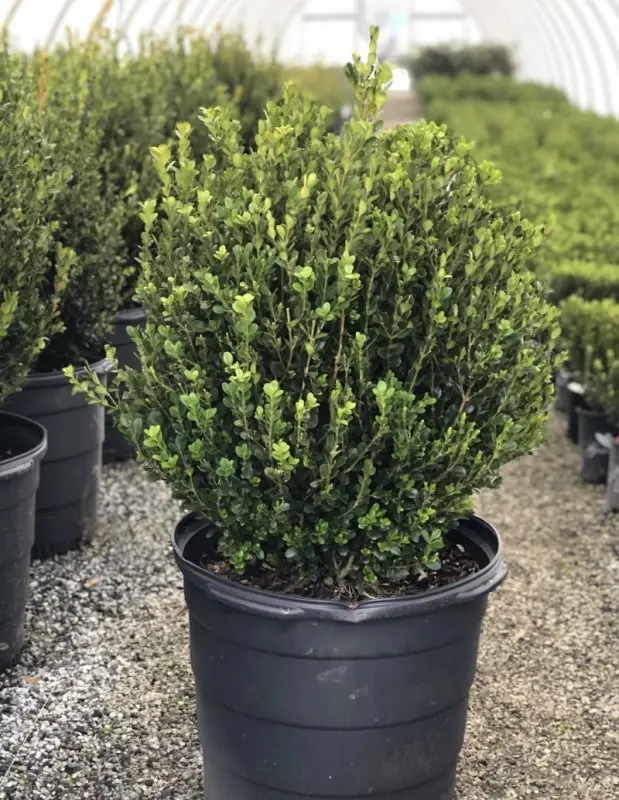-
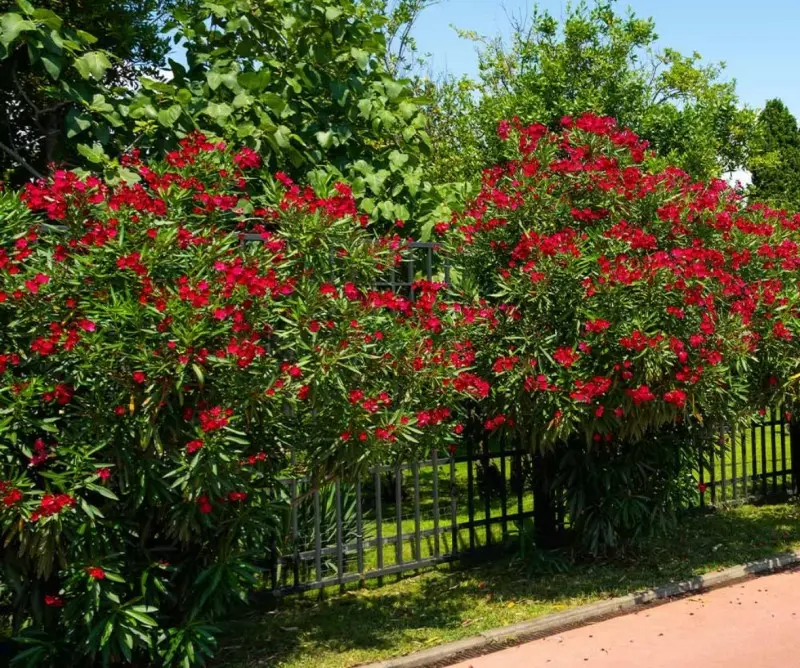
Oleander
$0.00
Full sun
-
5'-15'
Deer resistant
Oleander (Nerium oleander) is a robust, evergreen shrub or small tree renowned for its lush, dark green foliage and showy, fragrant flowers. Native to the Mediterranean and parts of Asia, Oleander produces clusters of large, trumpet-shaped flowers in vibrant shades of pink, red, white, yellow, and salmon. Blooming from late spring through fall, its long-lasting flowers add bold color to warm-climate gardens and are highly attractive to pollinators like butterflies.
Oleander typically grows between 6 to 20 feet tall and 6 to 10 feet wide, depending on the variety and growing conditions. This plant thrives in full sun and is hardy in USDA zones 8-11. Known for its adaptability, Oleander tolerates a variety of soils, from sandy to loamy, as long as they are well-draining. It is also highly drought-tolerant and salt-tolerant once established, making it ideal for coastal areas, xeriscape gardens, or other low-water landscapes.
Low-maintenance and easy to grow, Oleander requires occasional pruning to maintain shape and encourage new blooms, usually done in late winter or early spring. However, it’s important to handle this plant with care, as all parts of the oleander are toxic if ingested. Despite this toxicity, Oleander’s resilience, lush appearance, and profuse flowering make it a popular choice for creating colorful hedges, privacy screens, or dramatic focal points in warm-climate gardens. Its bold blooms and easy-care nature lend an exotic feel to a variety of landscape settings.
-
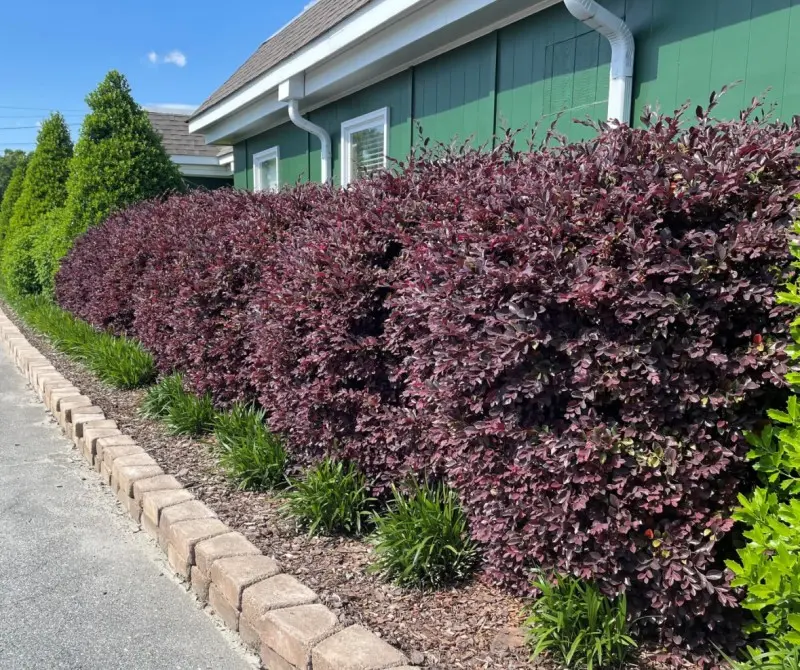
Loropetalum
$0.00
Full sun
Partial sun
3'-8'
Not deer resistant
Loropetalum (Loropetalum chinense), also known as Chinese Fringe Flower, is a versatile, evergreen shrub known for its striking foliage and vibrant, fringe-like flowers. Native to Asia, Loropetalum is available in a variety of cultivars, with foliage colors ranging from deep green to burgundy and even dark purple, depending on the variety. In spring, it produces clusters of delicate, fringe-like flowers in shades of white, pink, or fuchsia, which contrast beautifully with the foliage and may reappear sporadically throughout the year.
Loropetalum typically grows between 3 to 10 feet tall and wide, though certain varieties can be pruned to maintain a smaller, more compact shape or allowed to reach their full height as a small tree. It thrives in USDA zones 7-10, performing well in full sun to partial shade, with deeper foliage colors showing best in sunnier spots. This shrub prefers well-draining, slightly acidic soil and is moderately drought-tolerant once established, making it suitable for low-maintenance and water-wise gardens.
Loropetalum requires minimal care beyond occasional pruning to maintain its shape, particularly if used as a hedge or border plant. Resistant to pests and diseases, it is a popular choice for both traditional and contemporary landscapes. Its year-round foliage, unique flower form, and array of colors make Loropetalum ideal for adding texture and vibrancy to garden borders, foundation plantings, privacy screens, or as a stunning standalone specimen.
-
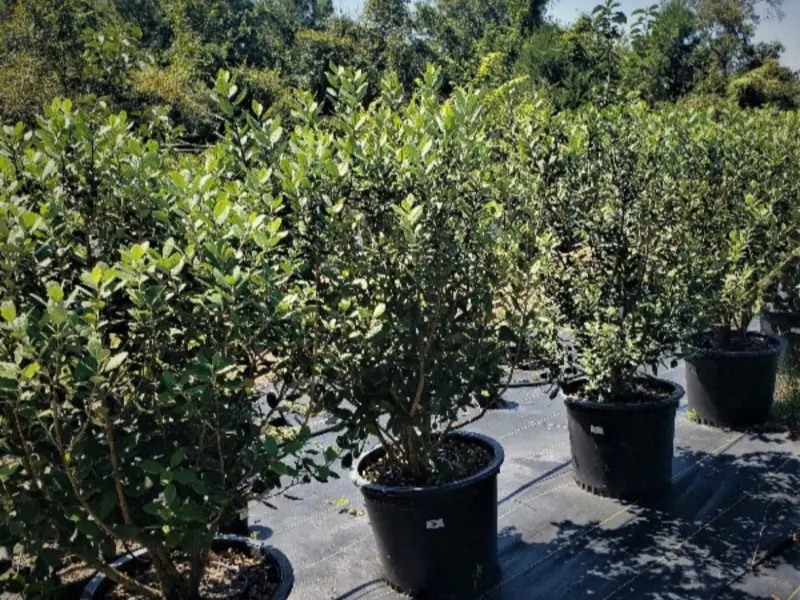
Pineapple Guava
$0.00
Full sun
Partial sun
5'-10'
Deer resistant
Pineapple Guava (Feijoa sellowiana), also known as Feijoa or Guavasteen, is an evergreen shrub or small tree known for its attractive foliage, edible flowers, and delicious fruit. Native to South America, Pineapple Guava produces unique, showy flowers in late spring to early summer, with fleshy white petals and bright red stamens. These petals are edible and have a sweet, slightly tropical flavor. In the fall, Pineapple Guava produces small, egg-shaped fruits with a sweet, aromatic flavor reminiscent of pineapple, mint, and guava.
This shrub typically grows to about 10 to 15 feet in height and width, though it can be pruned to stay smaller or shaped into a hedge. Pineapple Guava thrives in full sun to partial shade and is hardy in USDA zones 8-11, with some tolerance for brief periods of frost. It prefers well-draining soil and is drought-tolerant once established, making it a great choice for xeriscaping or water-wise gardens.
Low-maintenance and pest-resistant, Pineapple Guava requires little pruning beyond occasional shaping or thinning. It can also be grown in containers, making it versatile for patios or smaller spaces. The plant is self-pollinating, though planting multiple shrubs may increase fruit production. With its year-round greenery, fragrant blooms, and flavorful fruit, Pineapple Guava is a fantastic option for edible landscapes, privacy hedges, or as a standout specimen in sunny garden spots.
-
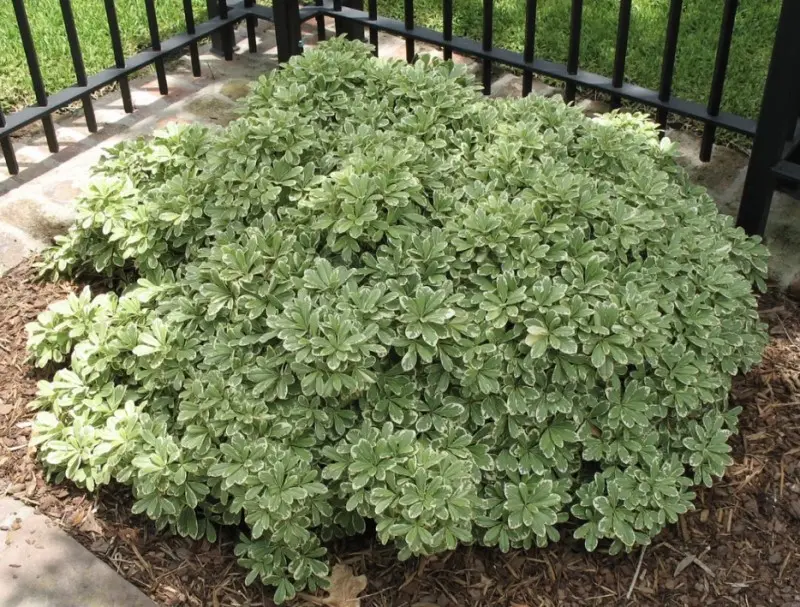
Pittosporum
$0.00
Full sun
Partial sun
3'-8'
Not deer resistant
Pittosporum (Pittosporum tobira), also known as Mock Orange or Japanese Pittosporum, is an attractive, evergreen shrub valued for its dense foliage, fragrant flowers, and versatility in the landscape. Native to Japan and China, this hardy plant features leathery, glossy, dark green leaves that grow in a rounded, compact form. In late spring, Pittosporum produces clusters of small, creamy-white, fragrant flowers that emit an orange-blossom scent, adding seasonal appeal and attracting pollinators.
Pittosporum typically grows to a height of 6 to 15 feet and spreads 6 to 8 feet wide, though dwarf varieties are available that stay more compact, making it suitable for smaller gardens. This plant thrives in full sun to partial shade and is hardy in USDA zones 8-11. Pittosporum is highly adaptable to various soil types, as long as the soil is well-draining, and is moderately drought-tolerant once established, making it a popular choice for water-wise gardens.
With its dense growth habit, Pittosporum is commonly used as a hedge, privacy screen, foundation planting, or specimen plant. It requires minimal pruning to maintain shape, though it can be trimmed more frequently if used as a formal hedge. Pest-resistant and low-maintenance, Pittosporum is valued for its year-round foliage, fragrant blooms, and ease of care, adding structure and elegance to both formal and informal garden designs. Its tolerance for coastal conditions also makes it a suitable choice for seaside landscapes.

